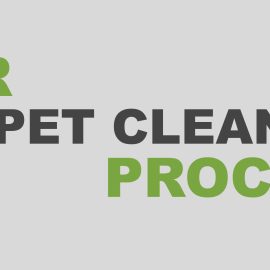
In the intricate dance of business interactions, every step, gesture, and backdrop plays a role in shaping perceptions. Among these, the state of an office’s carpet, though seemingly inconspicuous, can be a silent yet powerful communicator of a company’s values and attention to detail. This article will highlight why you may want to book your next carpet cleaning with Commercial Carpet Cleaning Perth.
AMPLIFYING PROFESSIONALISM THROUGH CLEANLINESS: THE CARPET’S ROLE IN BUSINESS ETIQUETTE
1. THE VISUAL HANDSHAKE
When a client or collaborator steps into an office, the carpet acts as a visual handshake, setting the tone for the interaction. Just as a firm, confident handshake can instill trust, a clean and well-maintained carpet silently conveys a message of professionalism, care, and commitment.
2. THE SCIENCE OF PERCEPTION
Neuroscientific studies have shown that our brains process visual information faster than any other sensory input. This means that before a word is spoken or a presentation is made, the visual cues from the environment, including the state of the carpet, have already made an impression. Stains, accumulated dirt, or visible wear can inadvertently signal neglect or a lack of thoroughness.
3. THE SUBTLETIES OF BUSINESS ETIQUETTE
In the realm of business etiquette, details matter. Just as one would ensure that their attire is impeccable and their presentation polished, the environment in which business interactions take place should also reflect the same level of care and preparation. A pristine carpet, free from blemishes, speaks volumes about an organization’s dedication to excellence in all facets of its operations.
BREATHING EASIER: THE AIR QUALITY EQUATION AND THE UNSUNG HERO – YOUR OFFICE CARPET
Air quality, a topic often reserved for discussions on outdoor pollution, has a significant indoor counterpart that plays a pivotal role in our health and well-being, especially in enclosed office spaces. At the heart of this equation lies an often-overlooked component: the office carpet. Let’s delve into the science and significance of how carpets influence indoor air quality.
1. THE CARPET AS A PASSIVE AIR FILTER
Much like the dense forests that act as the Earth’s lungs, filtering out pollutants and providing fresh air, carpets, in their own microcosmic way, serve as passive air filters. Their fibrous structures trap a myriad of particles, from common dust and allergens to more harmful pollutants.
2. THE SCIENCE BEHIND THE TRAP
A study by the Environmental Protection Agency (EPA) reveals a fascinating fact: carpets can accumulate several pounds of soil and debris per year, per square foot. These particles, often microscopic, are pulled down by gravity and get lodged within the carpet fibers. This includes pollen, pet dander, dust mites, and even volatile organic compounds (VOCs) from paint or office equipment.
3. THE DOUBLE-EDGED SWORD
While trapping these particles prevents them from being continuously airborne and inhaled, there’s a catch. If not cleaned regularly, carpets can become saturated with these contaminants, releasing them back into the air, especially when agitated by foot traffic. This can lead to a degradation of indoor air quality, which, according to the World Health Organization, can exacerbate respiratory conditions and allergies.
4. THE PROFESSIONAL CLEANING DIFFERENCE
Enter professional carpet cleaning. With advanced techniques like hot water extraction and the use of HEPA filters, professional carpet cleaners can effectively extract these trapped pollutants. The result? A significant improvement in indoor air quality. Moreover, certain cleaning solutions used by professionals can neutralize bacteria and pathogens, adding an extra layer of protection.
INVESTING IN LONGEVITY: THE SCIENCE BEHIND CARPET DURABILITY AND CARE
In the vast landscape of office expenses, the carpet might seem like a static, one-time investment. However, delve a little deeper, and you’ll discover a dynamic interplay between daily wear, material science, and maintenance that determines the lifespan of this essential office fixture. Let’s unravel the intricacies behind carpet longevity and the pivotal role of professional care.
1. THE ANATOMY OF A CARPET
At its core, a carpet is a marvel of textile engineering. Composed of thousands of fibers, each strand is designed to be resilient, yet over time, they face the relentless assault of foot traffic, debris, and environmental factors. The quality and type of fiber, whether it’s nylon, polyester, or wool, can influence its natural durability. However, external factors play an equally significant role.
2. THE SANDPAPER EFFECT
Imagine walking on a beach. The fine grains of sand underfoot, while seemingly harmless, are abrasive. Now, transpose this scenario to an office setting. Dirt, dust, and minute debris that accumulate on carpets act much like sandpaper. With every step, these particles grind against the carpet fibers, causing microscopic damage. Over time, this abrasion accelerates wear and tear, leading to visible thinning and loss of luster.
3. THE SCIENCE OF FIBER WEAR
From a material science perspective, the constant abrasion alters the structural integrity of carpet fibers. A study published in the Journal of Textile Science & Engineering elucidated that the mechanical properties of carpet fibers, such as tensile strength and elasticity, diminish with increased abrasion. This degradation can lead to a carpet’s premature aging, manifesting as fraying, color fading, and reduced plushness.
4. THE REDEMPTION THROUGH PROFESSIONAL CLEANING
Professional carpet cleaning is not just about aesthetics; it’s a strategic intervention to prolong carpet life. By employing advanced techniques, professionals effectively remove the abrasive debris, mitigating the sandpaper effect. Furthermore, certain cleaning methods can restore the fluffiness and structure of the fibers, giving carpets a rejuvenated appearance.
5. THE COST-BENEFIT ANALYSIS
While the initial outlay for professional cleaning might seem like an added expense, the long-term savings are substantial. By extending the life of a carpet, businesses can defer the significant costs of replacement. Moreover, a well-maintained carpet retains its aesthetic appeal over the years, ensuring that the office space always looks welcoming and professional.
THE INVISIBLE THREAT: BACTERIA AND PATHOGENS – THE HIDDEN WORLD BENEATH OUR FEET
Amidst the hum of machines and the rhythm of daily tasks, lies a hidden universe teeming with life. This universe, nestled within the fibers of office carpets, is inhabited by microscopic entities: bacteria, mold, and pathogens. While these tiny organisms might be out of sight, their impact on health and well-being is profound. Let’s journey into this microcosm and uncover the science, risks, and solutions associated with these invisible threats.
1. THE MICROBIAL METROPOLIS
Every time someone walks into the office, they inadvertently introduce a myriad of microorganisms to the carpet. From the soil particles on shoes to the accidental coffee spills, carpets become a fertile ground for bacteria and mold to thrive. In fact, research from the Microbiome Journal suggests that carpets can harbor up to 200,000 bacteria per square inch, making it 4,000 times dirtier than a toilet seat!
2. THE HEALTH IMPLICATIONS
While many of these bacteria are harmless, some can be pathogenic, posing health risks. For instance, Staphylococcus aureus, commonly found in office carpets, can cause skin infections. Moreover, mold spores, when inhaled, can exacerbate allergies and respiratory conditions, especially in individuals with asthma or weakened immune systems.
3. THE SCIENCE BEHIND PATHOGEN PROLIFERATION
Several factors contribute to the proliferation of these microorganisms. Carpets in high-traffic areas or those exposed to moisture (like near water coolers or windows) provide an ideal environment for microbial growth. Additionally, organic matter, such as food particles, provides the necessary nutrients for bacteria to flourish.
4. BEYOND CLEANLINESS – A HEALTH IMPERATIVE
Maintaining a pathogen-free carpet is not just about cleanliness; it’s a health imperative. A clean carpet ensures a safer environment, reducing the risk of infections and allergic reactions. Moreover, in the current global context, with heightened awareness about infectious diseases, ensuring a hygienic workspace is paramount for employee well-being and confidence.



